
Altered States
20 November 2009 20:00, Les Brigittines, Brussels
In the context of Video Vortex V, hosted by Cimatics Festival. Curated by Stoffel Debuysere and María Palacios Cruz, in cooperation with Courtisane.
With the digital invading every creative enterprise and form of expression, pencils have become pixels, dreams have turned into data. While cinema’s obsession with the “holy grail” of photorealism has generated a blizzard of visual extravaganzas aimed at a suspension of the distinction between representation and simulation, a generation of DIY bricoleurs use ubiquitious “tools of vizuality” (Kevin Kelly) to explore alternative viewings and readings of the familiar. Through processes of transference, translation and combination, they encode, reveal or impose layers of information and deceive expectations about visibility and availability. Poking the surfaces of various images, sounds and symbols, their renderings create poetic, playful and often melancholic environments that are both alien and familiar, questioning our relation to images and our imagination.
(Altered States is a reworking of the Imagine programme, which was compiled for the Urban Screens Festival in Amsterdam)
Stephen Gray, Beep Prepared, 2002, 5’
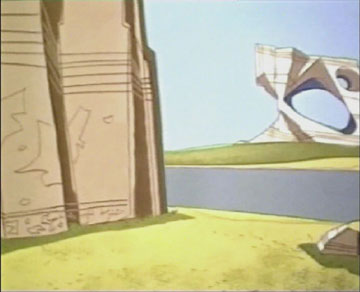
“What is Road Runner without Willie E. Coyote, what is a cartoon without protagonists? What remains of the longest running and most existential series of sketches, once the actors have left the stage? Part one of a deconstructivist trilogy.”
Joseph Ernst, Hip-Hop Movie, 2008, 4’

Transforming visual imagery into words, this video is a word for word translation of a stereotypical hip hop video. ‘Bling bling’ from a different point of view.
Chirstinn Whyte & Jake Messenger, Text Field, 2002, 1′

Chirstinn Whyte’s and Jake Messenger’s work exists in the interstices of dance and the digital world. Using ASCII animation, the two artists created a whirling text-body that is part fluid and improvised and part of an algorithm’s discipline, like a dancer that obeys chaos theory.
Oliver Laric, (>’.’)>=O____l_*__O=<('.'<), 2008, 1’30”
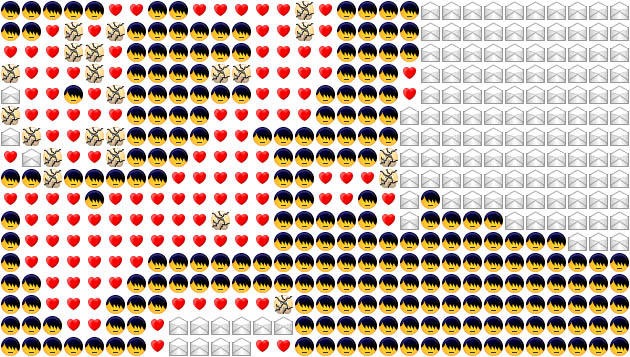
Oliver Laric uses thousands of tiny animated gifs to create an ultra-low-res illusion of cinematic movement, generating a barely discernible compilation of clips from a series of hip-hop music videos.
Max Hattler, Collision, 2005, 02’30”
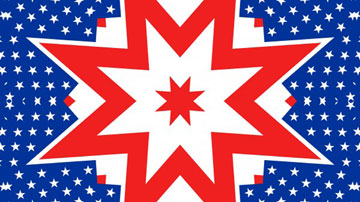
Islamic patterns and American quilts and the colours and geometry of flags as an abstract field of reflection. “It can be interpreted either way: carnage or carnival, it is open-ended. I don’t have the answers, I’m only asking questions.”
David O’Reilly, RGB XYZ, 2005-2008, 13′

“Discovered in late 2007 when a gardener accidentally dug up a hard drive buried somewhere in central Europe, RGB XYZ found its way to David O’Reilly, who compiled its five incomprehensible episodes into what became perhaps the most enigmatic piece of animation ever to leave a computer.”
Michael Robinson, All Through the Night, 2007, 6’

Described by Michael Robinson as a “charred visitation with an icy language of control; there is no room for love”. In this 4 minute digital video sequence, Robinson recontextualizes appropriated animation footage. In doing so, he successfully merges video effects into textures and glacial landscapes and creates his own kind of melancholic magic.
Dave Griffiths, Rogue State, 2003, 02’20”
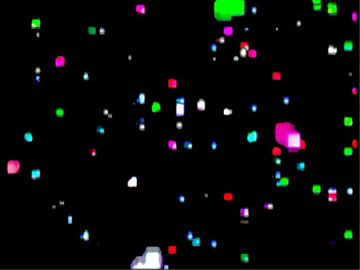
Vetoed UN resolutions hand-inscribed onto DV tape using a magnetic quill. Reinterpreted by the digital apparatus, these marks reveal abstract, lawless sonic and visual explosions – a fluid display of synthetic aerial terror. The action alludes to the shared nature of entertainment and military technology in seeking perfect spectacle whilst shunning error or uncertainty. Compressed light and sound are unleashed in volatile glitches to commemorate the abandonment of conventions in both the digital medium and international law.
Jonathon Kirk, I’ve got a guy running, 2006, 7’12”
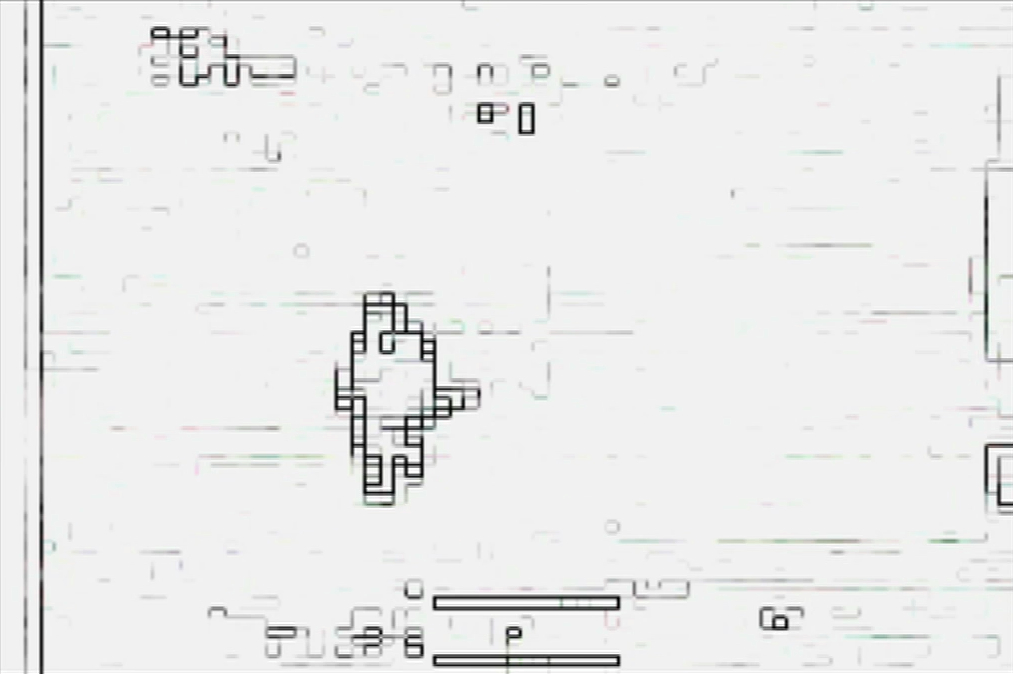
In this video, Jonathon Kirk explores the relation between cognition and recognition of war images, a relation that has been severely affected by the influence of simulation, surveillance and real-time media coverage. Images of a precision bombing, released by the U.S. Department of Defense to the glory of the American army and its weapon suppliers, are subject to algorithms, which gradually reveal the reality that lies beneath them.
Dietmar Offenhuber, paths of g, 2006, 1′
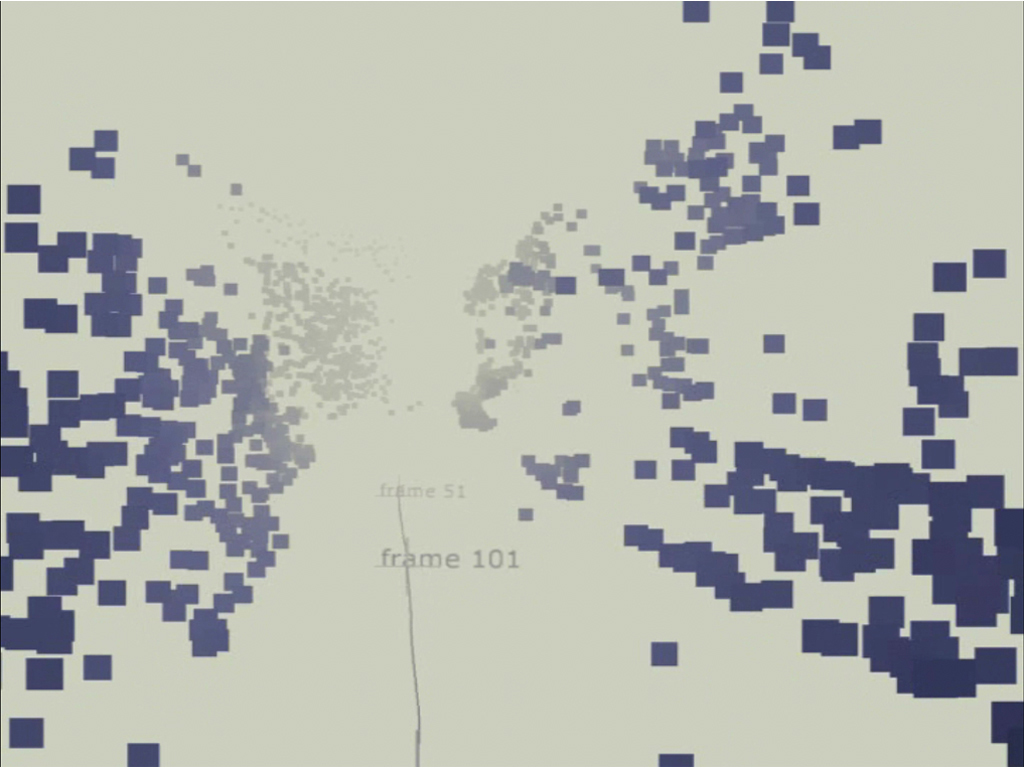
The long backwards tracking shot through a trench in Stanley Kubrick’s WWI drama Paths of Glory (1957) is reduced to pure geometry. Nothing is visible other than a matrix of rectangular figures and a line which follows the movement of the camera and counts off the spent frames. The viewer sees less but learns more.
Rebecca Baron & Doug Goodwin, Lossless #5, 2008, 3′
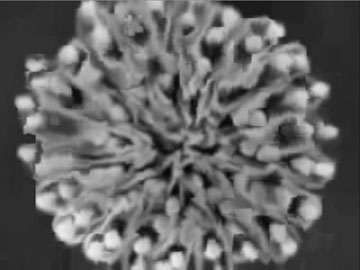
Lossless is a series of works that looks at the dematerialization of film into bits, exposing the residual effects of the process that makes file sharing possible. Baron and Goodwin used several methods to alter these works, either interrupting the data streaming by removing basic information holding together the digital format or comparing 35 mm to DVD and examining the difference between each frame. The project considers the impact of the digital age on filmmaking and film watching, the materiality and demateriality of film as an artistic medium, as well as the social aspects of how the online community functions and the audience for such obscure films.
Nicolas Provost, Papillon D’Amour, 2003, 03’30”
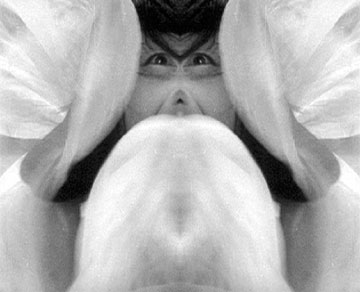
By subjecting fragments from the Akira Kurosawa’s film Rashomon (1950) to a mirror effect, Provost creates a hallucinatory scene of a woman’s reverse chrysalis into an imploding butterfly. This physical audiovisual experience produces skewed reflections upon Love, its lyrical monstrosities, and a wounded act of disappearance.
Bernard Gigounon, Starship, 2002, 4′
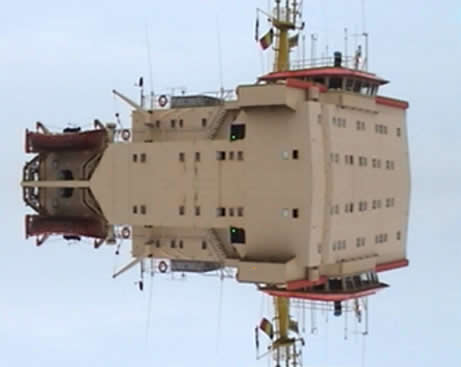
Fantasy worlds are always there, anywhere, just like images, the only thing we need to do as a spectator is to allow our imagination to run free. Gigounon gives us a boost to let go of trivial reality, even if just for a while. This results in tiny phantasmagorias like Starship, a visual investigation of a passing ship, which turns into a weird and estranging object through the juxtaposition of its symmetrical reflection.
Stewart Smith, Jed’s Other Poem, 2005, 3’

Stewart Smith programmed Jed’s Other Poem, a music video for a Grandaddy song, in Applesoft II on a 1979 Apple ][+ with 48K of RAM. Seriously. Jeddy-3, a humanoid robot built from spare parts, is a recurring character in Grandaddy’s 2000 album The Sophtware Slump. According to Grandaddy, before Jed’s system crashed he wrote poems. Poems for no one.
———————————————————————————————————————————————————————–
LIVE PERFORMANCE
Kurt D’Haeseleer & Tuk
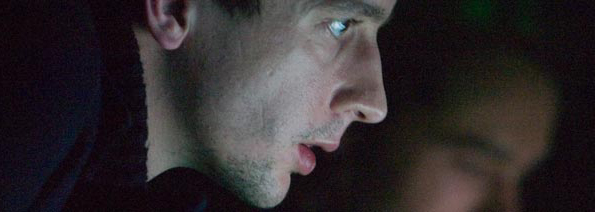
In the video works of Kurt D’Haeseleer, the spectator is dropped in a world bombarded with digital fragmentation bombs. People wander through a kaleidoscopic labyrinth of trembling bodies and mutating buildings until they are swallowed by a yawning void. Lost pixels nestle like parasites under the skin and drag them through an everyday world that looks strange beyond recognition. D’Haeseleer regularly collaborates with Guillaume Graux aka Tuk, whose delicate sonic compositions reverberate with the equally uncanny image worlds, like atoms rebouncing endlessly in a hall of mirrors, a collection of stolen dreams melted into a new impressive universe.
On the same night there will also be artist presentations by Constant Dullaart and Albert Figurt. See www.cimatics.com